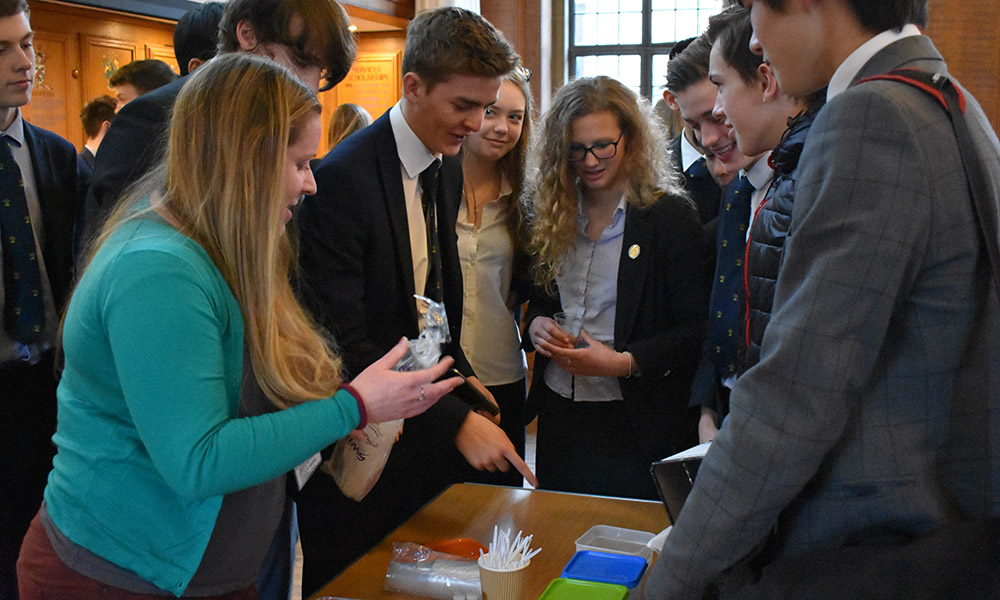 The chemistry behind the sweets sold at Harry Potter’s famous wizarding sweet shop, Honeydukes, was revealed in a hands-on lecture to the Sixth Form symposium.
The chemistry behind the sweets sold at Harry Potter’s famous wizarding sweet shop, Honeydukes, was revealed in a hands-on lecture to the Sixth Form symposium.
Dr Joanna Buckley, a chemical scientist from The University of Sheffield, told students which real-life sweets she thinks inspired author JK Rowling’s more spectacular versions in her best-selling series of books.
Honeydukes caught the imaginations of readers world-wide with its sweets that make you levitate, lollipops that burn holes in your tongue, chocolate toads that hop realistically in your stomach and jelly beans that sometimes taste of ear wax!
Sixth Form students had the opportunity to make and taste muggle versions of these legendary treats, find out more about the chemistry of taste and play the weirdest game of Russian Roulette ever, featuring some rather disgusting flavours!
Students’ delights included testing popping candy and attempting to explain the fun experience taking place in their mouths. Dr Buckley explained how the manufacturer melts sugar, lactose, water and colouring/flavouring mixture. This is then blasted with about 600lbs per square inch of carbon dioxide gas - 40 times greater than atmospheric pressure. The carbon dioxide is desperate to escape and when the sugar melts on the tongue, the bubbles of gas release, causing a popping sensation.
Dr Buckley thinks popping candy inspired Honeydukes’ levitating sweets, Sherbert Dips were behind the lollipops which burn a hole in your tongue, and an enzyme called invertase (see below) inspired the hopping chocolate frogs.
She challenged students to explain how the gooey centre of After Eights is made, before it’s perfectly coated in dark chocolate, before explaining how water, sucrose (sugar) and mint flavourings are mixed with the invertase enzyme. (Enzymes are biological catalysts that speed up metabolic processes and keep us alive.) The mixture forms a solid which is then dipped in dark chocolate. After roughly 3 days, stored at 18°°°C, the invertase works its magic, creating a gooey centre.
Dr Buckley brought in some jelly beans which recreated both the delicious and disgusting flavours in the “lucky dip” experienced by Harry Potter and his friends. She invited students and teachers to take their own chances with the sweets, with predictably mixed reactions from those who tried them.
Have you ever wondered why eating too much pineapple can lead to pain and discomfort in your mouth? Or why the gorgeous Lindt Lindor truffle centre is cooler than its exterior? Dr Buckley revealed the chemical explanation to these pressing questions – and shared the enthusiasm which drives her to discover the answers in a lively and engaging talk. We look forward to welcoming her back to Pocklington School again in the future.


